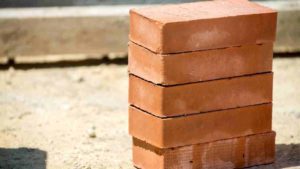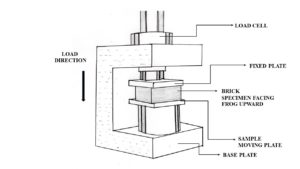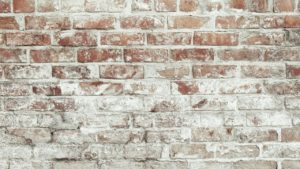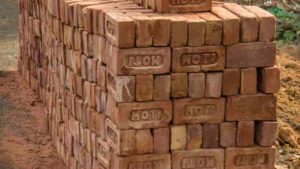Testing of Bricks is performed both on the job site and in the laboratory. A variety of testing on bricks is performed to verify their suitability for use in construction. Bricks are one of the oldest and most significant building materials due to their longevity, dependability, strength, and low cost. Bricks are construction materials made of clay and come in a specific size. Additionally, they are the foundational components of construction. Brick is a building material that has been around for a long time. They serve as both a load-bearing structure and a load-transfer medium. The dimensions of the brick are 190 mm × 90 mm × 90 mm. They have sharp edges and are also rectangular.
Requirement of Good quality bricks and significance of test on bricks
The following are the fundamental requirements for a good quality brick, making testing of bricks and brick quality checks essential.
- Bricks should be homogenous and compact.
- They should have equal proportions of clay, sand, and silt.
- Bricks should have requisite plasticity.
- They should be free from defects like lumps and holes.
- The shape of the brick should be rectangular.
- A good brick should not break if dropped from a one-meter height.
- Brick should not possess internal cracking and shrinkage.
- The brick should be fire and scratch-resistant.
- Water absorption should not exceed 20 per cent of its dry weight.
- The compressive strength of the brick should not be less than 3.5N/mm2.
To maintain these qualities, testing of bricks should be done. This article discusses the test on bricks that are carried out to ensure the quality of good bricks.
Also Read : Building Materials and Construction – A comprehensive guide
Related posts from vincivilworld
Testing of Bricks
In order to find the quality and sustainability of the bricks various tests are performed. Further in this article, we have listed a few test procedures.
- Water absorption test of brick
- Compressive strength test of brick/ crushing strength test on bricks
- Hardness test of brick
- Shape and size of bricks
- Colour test
- Soundness test of brick
- Structure of brick
- Efflorescence test of brick
Water absorption testing of bricks
A water absorption test on bricks is performed to determine the amount of moisture absorbed by brick under extreme conditions. The purpose of the absorption test is to determine the durability of the bricks. The water absorption test necessitates the use of a weighing machine and a drying oven.
- Firstly, the brick specimen is dried in a drying oven
- Afterwards, weigh the dry specimen using the weighing machine and mark it as W1.
- Secondly, immerse the brick in water for 24 hours.
- Then take the brick out and drain the water.
- Similarly, measure the weight and mark it as W2.
- Finally using the formula determine the water absorption.
Water absorption = (W1 -W2) / W1 x 100
The moisture content of the brick is thus determined by the difference between the dry weight and the wet weight. Water absorption for high-quality bricks should be less than 20% of the dry weight. This brick test ensures that the brick is long-lasting and can withstand extreme weather conditions.
Compressive strength of brick/Crushing strength of brick
The ability of the brick to withstand a particular load without failure is the compressive strength of the brick.
A compressive testing machine is an apparatus for determining compressive strength.
- First, Take three sample specimens and submerge them in water.
- After 24 hours, drain the water. Fill the frog and void with mortar in a ratio of 1: 3.
- Subsequently, store the brick in jute bags for 3 days.
- Place the brick in the compression testing machine with the brick frog area facing upwards. After that apply the load slowly.
- Note down the load at which the bricks break.
- Finally, using the formula to determine the compressive strength.
Compressive strength (N/mm2) = Maximum load at bricks fail/ Loaded area of brick
For good quality bricks, the compressive strength should not be less than 3.5 N/mm2.
Efflorescence test on brick – Testing of bricks
A high-quality brick should be free of soluble salts. However, If soluble salts are present, they form a white substance on the brick surface. Generally, efflorescence on brick is the name given to this white formation.
- First, take a brick specimen and submerge it in water for 24 hours.
- After 24 hours, drain the brick and allow them to dry.
- Keenly observe the brick surface.
| Brick surface condition | Degree of Efflorescence |
| No white substance | Zero efflorescence |
| 10% white substance | Slight efflorescence |
| 50% white substance | Moderate efflorescence |
| More than 50% white substance | Heavy efflorescence |
Hardness test on bricks
The hardness test is a field test of bricks. Accordingly, they are performed on-site. A good quality brick should resist scratches against sharp things. The following is the test procedure for the hardness testing of bricks
- At first, choose a brick randomly from the stack.
- Using a nail or finger make a mark on its surface.
- If there is no scratch, then it is a good quality brick.
Shape and size Testing of Bricks
A good quality brick should be uniform in size and rectangular in shape. In order to check this, measure the brick on the field. Generally, the standard size of the brick is 190mm x 90mm x 90mm.
- Randomly, choose 20 bricks from the stack.
- Sort them in length, width and height wise.
- If the sizes are the same, Then they are good bricks.
Colour test of bricks
Normally good quality bricks are deep red or copper in colour. Generally, the colour test is a field test. Therefore, it can be observed visually.
Structure Test on Bricks
Homogeneity and compact structure are the qualities of good bricks
- Randomly, pick one brick from the stack.
- Cut the brick into two pieces at the centre.
- Then observe its inner side.
- Good quality bricks should be free from defects such as lumps, holes etc.
Soundness test of bricks
The soundness test of bricks is a field test done to find the strength of the bricks.
- In the soundness test of bricks, choose two bricks randomly without damage or breaking.
- Hit the bricks with each other.
- Then, listen to the sound the brick produce.
- If a metal ringing sound is produced, then it is good quality bricks.






3 comments
Comments are closed.